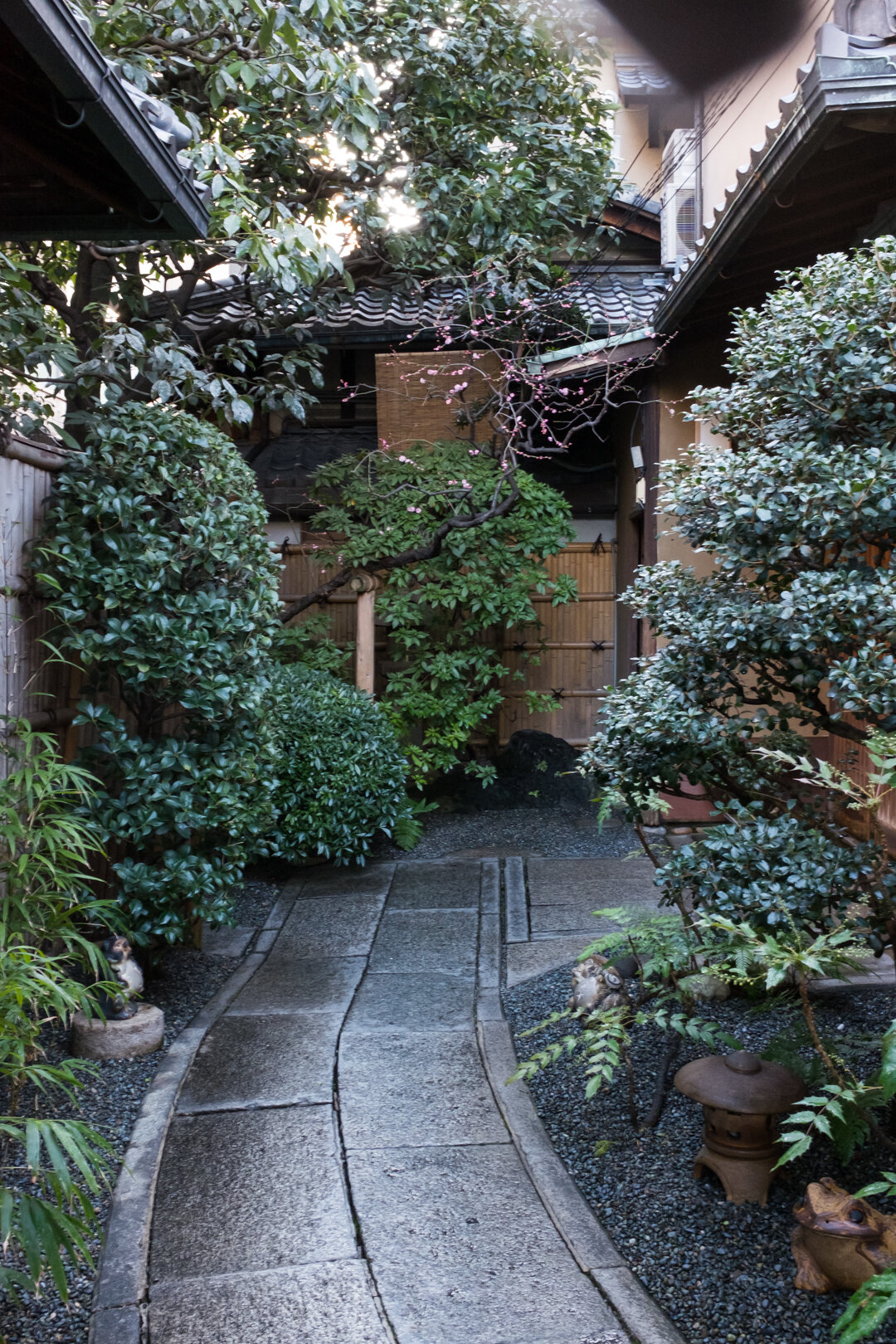I often find myself engaged in a futile search online for a good English translation of the term: nukumori.
Just about all websites translate the term as “warmth,” which is not wrong, but gosh does it ever leave out so much.
Much of Japanese descriptive language is like this in that it is a far more expressive language, in my opinion, than is English. Translations of words thus consistently fail to grasp the true possible meanings behind the words. Have you ever thought why Matsuo Basho could say so much with so few syllables? Each syllable in Japanese can count for far more, depending on what words are used. How could wabi-sabi for example mean all those things and only consist of two words?
Slippers, Kyoto ©2016 George Nobechi
So then what is nukumori ? Well, first of all it is not piping hot; it is, at most lukewarm. So what are some examples? The warmth of the winter sun coming through a window of a parlour late in the afternoon. That is nukumori. The cat nestled at your feet as she dozes. That is nukumori. The way the surface of your recliner feels a few minutes after your fireplace has gone out. That is nukumori. The teacup still left on your coffee table after you’ve had most of your tea. That is nukumori. So far I think you’re with me.
Cozy Cats on Kate Breakey’s artwork, ©2019 George Nobechi and Kate Breakey
But what else is nukumori? The slight indentation visible in the seat cushion after you’ve left the room. A chair drawn back while the others remain properly under the table— a place where someone was just recently. The scraps of clay left on a potter’s table, after he has finished making a piece. The cookie your partner left half eaten on a small plate while something called them away from that space. The letter from grandpa that you open every few years to read over, still written in his distinctive penmanship. This is all nukumori.
Golden Hour Light, Potter’s Studio, Yamadera ©2016 George Nobechi
Entranceway to inn in Kyoto, wet down on purpose to welcome guests home - nukumori ©2016 George Nobechii
I will take it a step further. I think that at times there can be a sense of impermanence, longing or even at times, absence in nukumori, be it overt or subtle. Absence that makes the heart grow warmer. There. That’s maybe one good definition of nukumori.
Maybe you feel it in certain photographs. I’ve had people ask me about that warm feeling they get from some of my windows photographs and what it comes from and I then set about to explain what nukumori means, and yes, it usually takes me about this many words to do so. In the future I may simply refer people to this blog post from now on, if they’ll excuse my self-indulgence in directing them to a post of my own creation.
I hope that this entry helps you to think about the concept of nukumori and that you may also look for it in your life. Noticing these little things is an inherently Japanese characteristic, but it is also something that when you are made aware of it, you start to feel it everywhere. Laura Valenti’s work and teachings are all about nukumori in our daily lives, she just calls it something else, like “small miracles,” which is another beautiful way to put it. “Small miracles of gently palpable warmth.”





